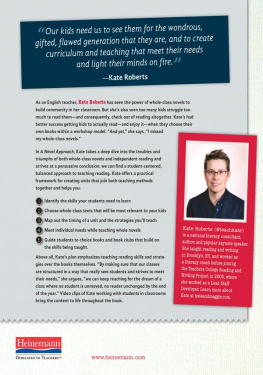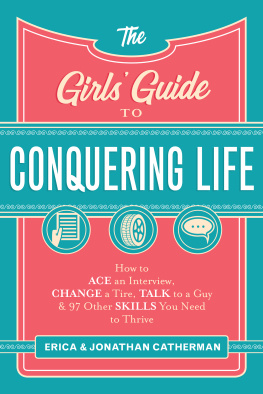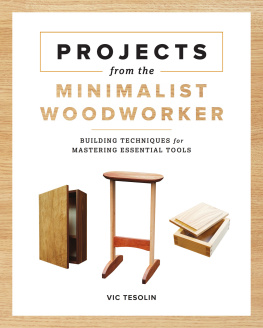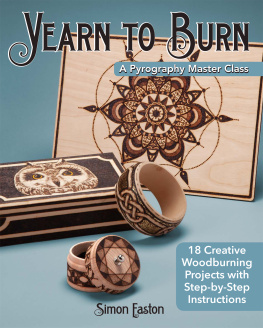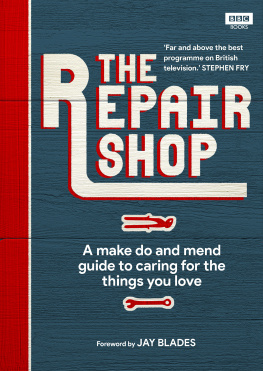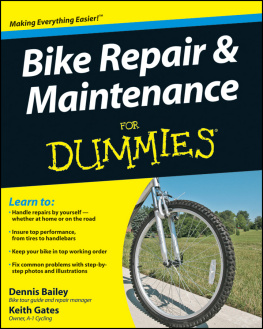Contents
Guide
Page List
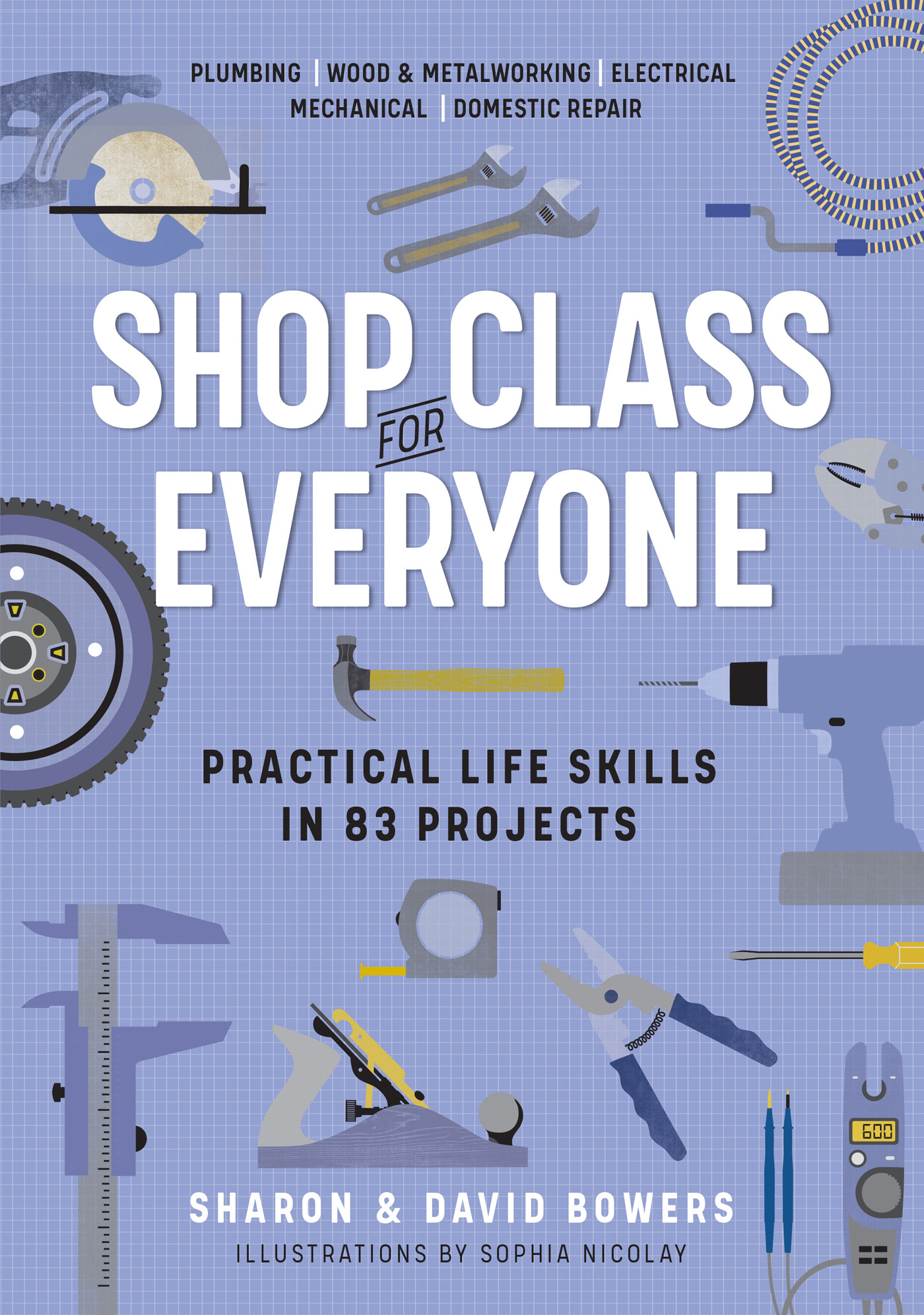
Shop Class
for
Everyone
Practical Life Skills in 83 Projects

Sharon & David Bowers
Illustrations by Sophia Nicolay
Workman Publishing | New York
For Hugh and Pearse
Acknowledgments
So many people have helped make this book happen and we are so grateful to them all.
Our sincere thanks again to Lynn Cohen, Garth Sundem, Jennifer Griffin, and Angela Miller.
In this latest edition we were thankful to have the watchful eye and steady hand of Sun Robinson-Smith. Thanks also to Megan Nicolay, who has been with this book since it originally stemmed from an idea by Raquel Jaramillo. Sophia Nicolays lovely and clear illustrations continue to brighten the pages and we are lucky to have her on board.
Warmest thanks to the talented team at Workman, many of whom also worked on the original edition: Samantha Gil, Janet Vicario, Orlando Adiao, Eric Brown, Annie ODonnell, Barbara Peragine, Kate Karol, Julie Primavera, Claire Gross, Abigail Sokolsky, Claire McKean, Page Edmunds, and Suzie Bolotin.
Contents
Your home tool kit and how to use it
The fine art of measuring, cutting, soldering, and making with your hands
Learn to unplug, seal up, and troubleshoot to make all your pipe dreams come true
Untangle and understand those wires, circuits, fixtures, and switches
Keep those wheels and gears turning
introduction
A s technology keeps advancing, it feels like we can do anything if weve got the right device. We can order things online and have them delivered within a couple of hours. We can use our voices to control the lights in our homes. For decades experts have declared that computers were going to make offices paperless, and the powers that be decided America would henceforth specialize in producing information workers. Nobody would need to dirty their hands with machinery and grease when technology was the name of the game. Presumably, wed just leave the repairs to automation while sitting in our cubicles, working diligently at our computers. With an eye on this promised future, many school systems got rid of their Shop and auto repair classes. (While most of us are still waiting on that paperless office we were promised.)
Of course, modern life doesnt quite look like a sci-fi movie. And even in space, someones got to patch a hole or fix a busted rover! Unfortunately, the cancellation of classes that taught essential how-tos and shared practical knowledge has had serious consequences: a whole population of people who never learned to paint, build, do basic plumbing, or complete minor auto repairs. The challenges and global crises of 2020 made it clear that we need more than our screens to stay healthy and keep a household together. We need basic skills that we can build on to adapt to lifes unexpected difficulties.
Becoming more self-sufficient is not only easier than many people imagine, its also extremely satisfying. Work that you do with your own hands is work held to a single standard: Did I fix it? And if the answer is yes, youre finished. Its a feeling of accomplishment that a day spent scrolling through social media, ordering on apps, or poring over spreadsheets cant approach. By the same token, shelves that youve built yourselfmade with attention and care and not ordered from a big box storeare well within the reach of anyone who takes a few minutes to learn the basics. Whether you desire the confidence to refinish a floor, fix a leaky pipe, install a dimmer switch, or change a flat tire, those skills are now literally within your grasp. Read on, then get busy.
Domestic Repair
O ne Sundays to-do list might include anything from fixing a leak, to painting a shelf, to banging down stray deck boards, to putting a new blade on the lawn mower, to hanging a picture. How can you predict what youll need next Sunday? You cant, which is why your home tool kit needs to be flexible, completeand organized! A trip to the hardware store for a screw or tool that you know is hiding somewhere in the garage can turn a two-minute fix into a two-hour job. Having the right tool on hand can also be the difference between an easy DIY job and a costly call to the handyman. Spending $200 on tools now can save you many times that amount later.
Hammer. You cant go wrong with a lightweight framing hammersuch as a 20-ounce, smooth-faced model with a straight claw.
Screwdrivers. A medium and a large Phillips ( + ) and flathead ( ) are great places to start.
Tape measure. A 1-inch-wide, 25-foot-long tape measure is indispensable. Make sure its high enough quality to assure a working lock and well-made retrieval spring.
Pry bar. A short cats paw pry bar will do just fine to pull nails and lift floorboards.
Locking pliers. Why burn your own grip strength to hold pliers closed? Instead, a pair of versatile, locking Vise-Grips are essential for keeping most things pinched around the house. Consider a pair of Irwin 10-inch curve pliers.
Needle-nose pliers. These are meant for electrical workto bend and cut wiresbut youll use them for everything from pinching tiny screws to pulling large splinters.
Slip-joint pliers. The most common pliers are two-position, slip-joint pliers that allow you to close tight in one position and grip large objects in the other. Plastic-coated or otherwise, padded handles are a plus.
Wire cutter/stripper. Go with a multi-sized wire cutter/stripper, which youll use when rewiring lamps and hanging light fixtures.
Voltage detector. Youll need a voltage detector to help locate the source of the trouble in light fixtures, circuit breakers, wires, and cables.
Cordless drill. Look for a variable speed, reversible, twist-lock model with a good set of bits. In addition to a kit of standard bits in a range of sizes, you might want a couple of spade bits, a masonry bit, a hole cutter, and bits used for driving screws (Phillips and flathead).
Chisel. Get a wood chisel, and try to keep it for shaving wood off a loose door jamb instead of opening paint cans.
Saw. A straight handsaw will cut boards quickly and even trim the odd tree branch in a pinch.
Level. You can get a pen-sized laser level for about the same price as a four-foot bubble level, and you will find pros who swear by each. Pick one or the other.
Stud finder. Yes, you can knock on the wall until the hollow sound goes solid, but while you hone your 2 4 divination skills, get a stud finder.
Utility knife. A retractable-blade utility knife will do everything from cutting carpet to opening boxes.
Carpenters square. Carpenters use an L-shaped or triangular steel or aluminum square when building with 2 4s. Youll want one around to double-check the angles of the broken picture frame you tacked back together.
Staple gun. A well-made, hand-powered staple gun is essential for hanging holiday lights and tacking upholstered furniture. Make sure the gun you buy accepts staples up to " and ask a salesperson if you can give the staple gun a few test squeezes before buying. Buy a range of staples" and " are the most useful.


